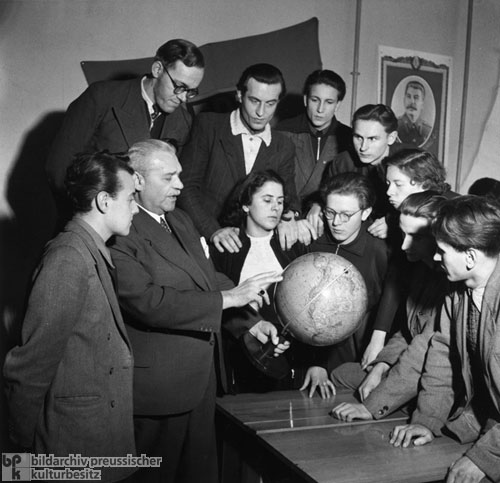|
Lecturers and Students in the Workers’ and Farmers’ Institute of Humboldt University (March 9, 1951)
Between 1945/46 and 1949, so-called preparatory schools [Vorstudienanstalten or VAs] were founded at several colleges and universities in the Soviet occupation zone, and on May 20, 1946, one of these facilities was opened in East Berlin as well. The purpose of these schools was to give workers and farmers and their children the chance to attain their university entrance qualifications [Hochschulreife] and to pursue university study. On October 1, 1949, the preparatory schools were converted into workers’ and farmers’ institutes [Arbeiter- und Bauernfakultäten or ABFs], where students usually received their university entrance qualifications after a three-year program. With the help of the VAs/ABFs, political leaders sought to end what they perceived as bourgeois educational privileges. Over the long term, political leaders hoped that offering farmers and workers enhanced opportunities for education and social mobility would aid in the creation of a loyal elite. Nevertheless, it proved difficult to recruit enough interested students since the individuals targeted by the educational initiative were often more interested in advanced occupational training than a university degree. Between 1949 and 1963, a total of 35,000 students received their university entrance qualifications at ABFs. In 1963, all of the institutes were closed down with the exception of those in Halle and Freiberg. Photo by Hildegard Dreyer.

|


